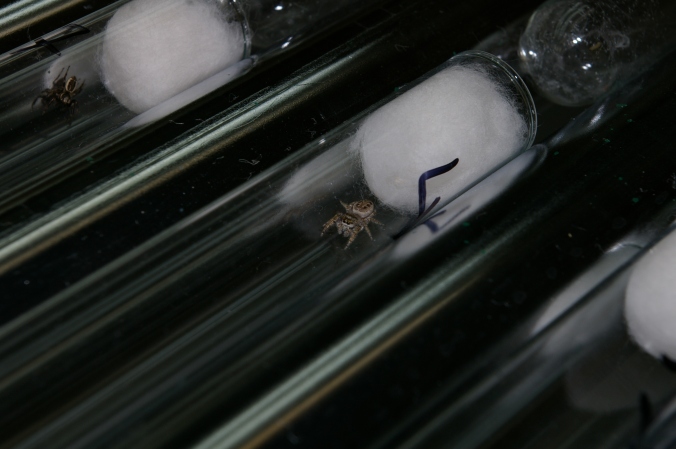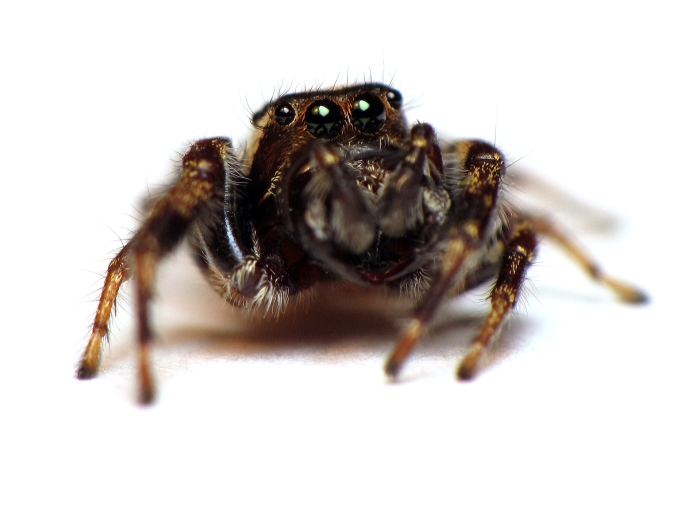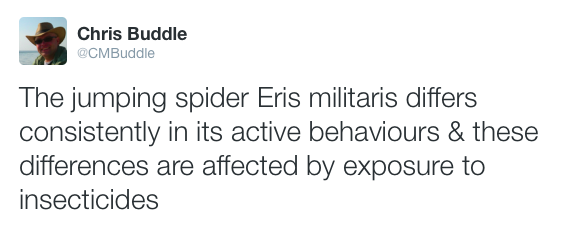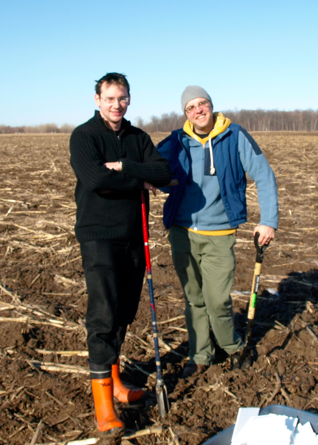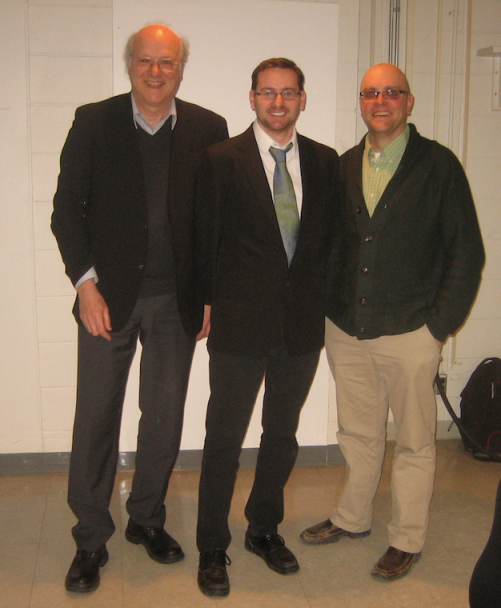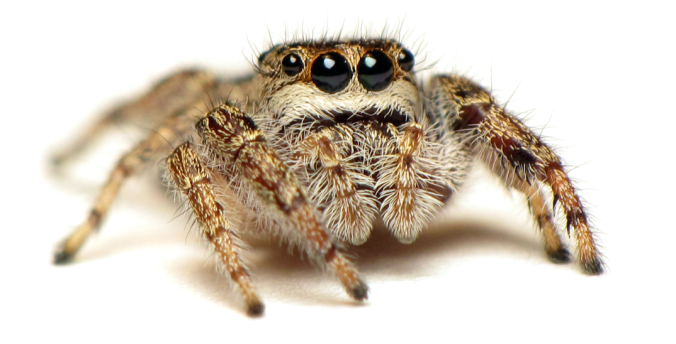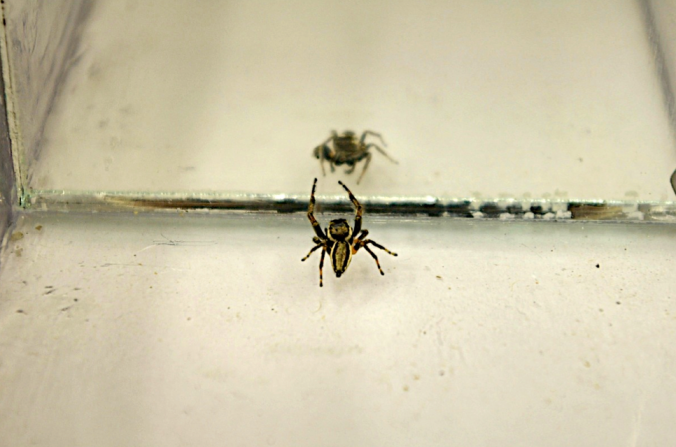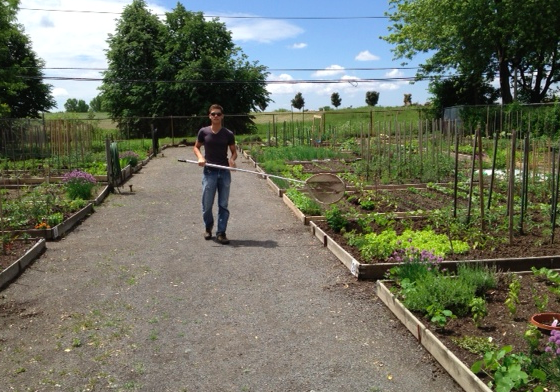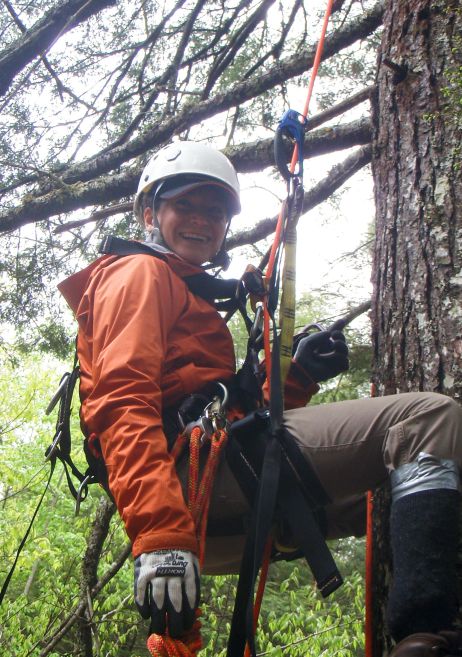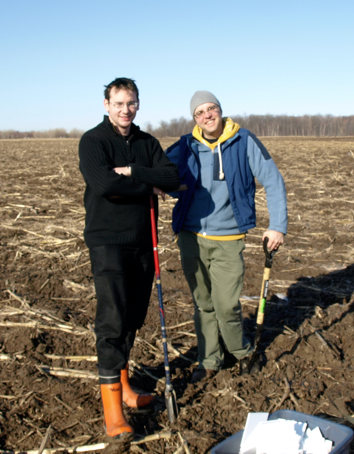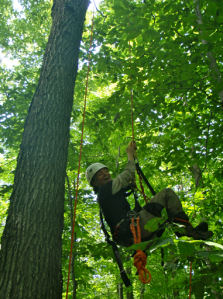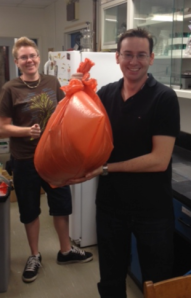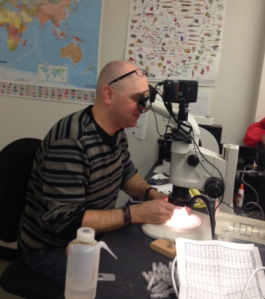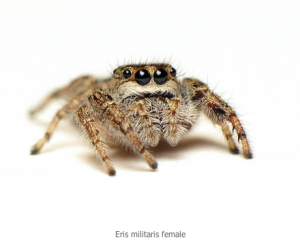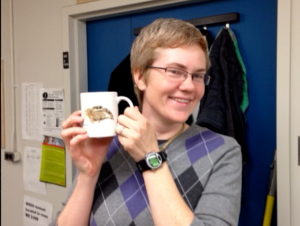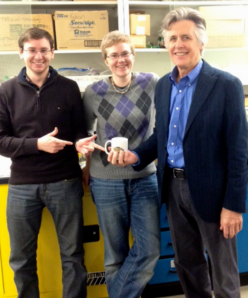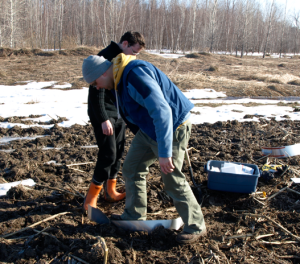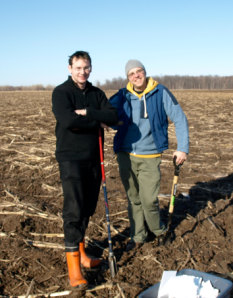This post is written by former PhD student Raphaël Royauté, and is a plain-language summary for our most recent article titled: Under the influence: sublethal exposure to an insecticide affects personality expression in a jumping spider
It’s well known that personalities can shift and change when we are ‘under the influence’ of chemicals, be it drugs or alcohol. As entomologists, we also consider this question for the insects and spiders that live among us: although we assume arthropods can similarly be affected by chemicals in their environment, it’s less clear how these chemicals may affect the personalities of these arthropods. We tested the effects of insecticide residues on the personalities of a jumping spider known to live in apple orchards. We found that individual-based personality shifts occurred when spiders were exposed to sub-lethal doses of an insecticide. This mean that even before we might see ‘population-level’ effects of insecticides on an important predator in agro-ecosystems, individual spiders themselves get, um, sort of messed up when under the influence.
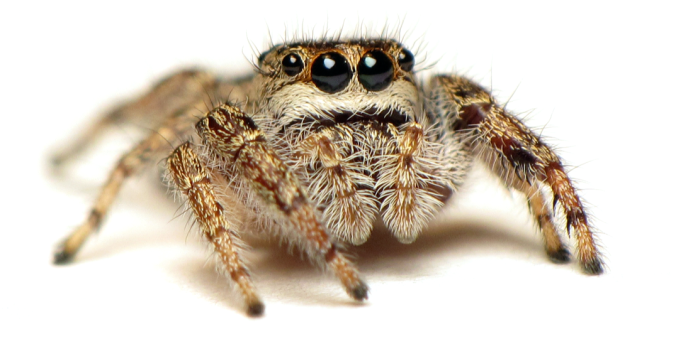
How is this cute jumping sipder affected by insecticides? (photo by C. Ernst, reproduced here with permission)
Insecticides are often used in agriculture for various reasons, but can have negative effects on the ‘non-target’ fauna living in our agricultural fields. One of the most important challenges in evaluating their toxicity is that these chemicals can persist at low concentration in the environment. These concentrations are unlikely to kill exposed organisms but may substantially alter behaviours. Most of our evidence of the toxicity of insecticides on behaviours comes from studies on pollinators and research has shown decreases in spatial memory and learning capacities.
There remain gaps in our knowledge about how other types of organisms respond to these compounds. Studies on insecticide toxicity may be also limited because they tend to ignore how insecticides shape variation in behaviour. This is important because individuals differ in their behavioural tendencies and may not have the same weight in ecological processes: some individuals are more active, show more aggressiveness or consume more food. Personality traits can also be inter-related and form “behavioural syndromes”: clusters of behavioural traits that are correlated and evolve as a package. If personality traits are interconnected, any insecticide modifying one trait is likely to alter the whole syndrome. We’ve shown previously that behavioural syndromes differed between populations exposed and unexposed to insecticides in the Bronze Jumping Spider, a species common in apple orchards and known to prey on several economically important pests. But those populations could be different for a variety of reasons: for example, perhaps the insecticides affect spider behaviours because there is simply less food available in insecticide-exposed areas for example.
We wanted to test if insecticides could be directly responsible for the shifts in personality and behavioural syndromes we noticed. In other words, when a spider is “under the influence” of insecticides, is it still behaving according to its personality type?
The similarities between insecticides and drugs is fascinating: Both types of compounds target the nervous system, both can affect behaviours and both can kill above a certain lethal dose. In fact caffeine and nicotine evolved as natural plant defenses against insect herbivory and the latter was one of the first insecticides ever used. As crazy as it sounds, the effect of psychoactive drugs has been investigated in spiders in the past! The legend goes that, back in 1948, zoologist H. M. Peters was annoyed by his garden spiders spinning webs at “such ungodly hours” (2 am-5am). He wanted to found a compound that would shift the spinning behaviour to more a “decent” schedule, and he asked pharmacologist Peter N. Witt for help. Witt tried different psychoactive compounds on the spiders, including caffeine, LSD and marijuana but couldn’t produce the desired effect. What he found was in fact much more interesting: each compounds produced a distinct type of “drug web”, altering its shape, size or regularity ! (from Foelix’s “Biology of Spiders”) More recent research has shown that some commonly used insecticides affect web building in the same way drugs do.
We focused on how activity and prey capture capacities were affected by exposure to a widely used insecticide (phosmet) in the Bronze Jumping Spider. We tested activity and prey capture before and after exposure the insecticide and compared the amount of behavioural variation with that of a control group. Doing research in ecology sometimes requires using original equipment. In our case we found that the best way to expose our spiders to the insecticide was to use a hotdog warmer! We applied the insecticide solution on test tubes and used the rotation of the hotdog machine to get a homogeneous surface coated with dry insecticide residues. This allowed us to have a more precise control of the dose that each spider received while simulating field exposure conditions.
We did not found any effect of the insecticide on average behaviour between treatments but the ranking of individuals was strongly affected after insecticide exposure. In general spiders exposed to the insecticide were more variable in their behavioural tendencies. This suggests that the effects of insecticides on personality differences may manifest before any effects on the population as a whole are detected, in which case scientists may be frequently underestimating the toxicity of insecticides. Another puzzling result was that males and females did not respond in the same way to insecticide exposure. Males were most affected in the way they explored their environment but their capacity to capture prey remained intact. Females instead showed a decrease in the strength of the activity-prey capture syndrome.
Spiders play an important role in agricultural fields as they help regulate pest outbreaks. By altering personality differences and their syndromes, insecticides may limit spiders’ capacity to provide this important ecosystem service in subtle ways. As usual, this research leads to more questions than answers. At the organism’s level, it is important to understand how long these personality shifts last for. Do these shifts vary depending on how frequently spiders get exposed to insecticide or to what types of insecticides they are exposed to? How do they ultimately affect a spider’s capacity to escape predators, capture prey or reproduce depending on the individual’s personality? At the ecosystem level, prey get exposed to insecticides too, what happens to the predator-prey dynamics when the personality of both prey and predator is affected? How does that translate into biocontrol services? These are all important questions that I hope to contribute to in the future. Stay tuned!
References:
Royauté, R., CM Buddle & C. Vincent: Under the influence: sublethal exposure to an insecticide affects personality expression in a jumping spider. Functional Ecology. . http://dx.doi.org/10.1111/1365-2435.12413
Godfray, H.C.J., T. Blacquiere, L.M. Field, R.S.Hails, G. Petrokofsky, S.G. Potts, N.E. Raine, A.J. Vanbergen & A.R. McLean. 2014. A restatement of the natural science evidence base concerning neonicotinoid insecticides and insect pollinators. Proc. R. Soc. B 281: 40558 http://dx.doi.org/10.1098/rspb.2014.0558
Royaute, R., C.M. Buddle & C. Vincent. 2014. Interpopulation Variations in Behavioral Syndromes of a Jumping Spider from Insecticide-Treated and Insecticide-Free Orchards. Ethology. 120, 127-139. http://dx.doi.org/10.1111/eth.12185
Nathanson, J.A. 1984. Caffeine and related methylxanthines: possible naturally occurring pesticides. Science. 226, 184-187. http://dx.doi.org/10.1126/science.6207592
Rainer F. Foelix (2010). Biology of spiders. Oxford University Press. p. 179.
Samu & Vollrath. 1992. Spider orb web as bioassay for pesticide side effects. Entomologia Experimentalis et Applicata. 62, 117-124. http://dx.doi.org/10.1111/j.1570-7458.1992.tb00650.x

